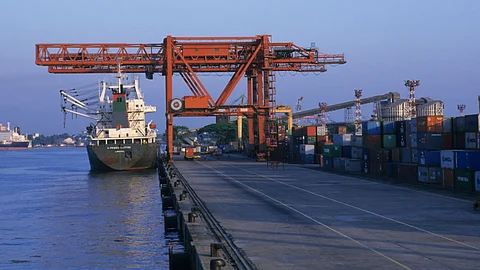
🔧 We’re Under Maintenance
We’ll be back shortly. Thank you for your patience.
We’ll be back shortly. Thank you for your patience.

Five-year pilot scheme will make it attractive to register ships in India and thereby shore up Indian tonnage.
The Indian government’s decision to approve a subsidy scheme to Indian shipping companies in global tenders floated by ministries and CPSEs for import of government cargo, will make it attractive to register ships in India and thereby aid in boosting the Indian tonnage.
The Indian cabinet led by Prime Minister Narendra Modi on Wednesday approved the scheme for the promotion of flagging of merchant ships in the country. According to the statement, registration shall be done online within 72 hours – the same as the world’s best ships registries, and the central government will provide $210 million over five years as a subsidy to shipping companies in global tenders floated by Ministries and CPSEs for the import of government cargo.
"For a ship which is flagged in India after February 1, and is less than 10 years at the time of flagging in India, the subsidy support would be extended at the rate of 15 per cent of the quote offered by the L1 foreign shipping company, or, the actual difference between the quote offered by the Indian flag vessel exercising the right of first refusal (ROFR) and the quote offered by the L1 foreign shipping company, whichever is less," a statement released by the government said.
For a ship that is flagged in India after February 1, and which is between 10 to 20 years old at the time of flagging in India, the government said that the subsidy support would be extended at the rate of 10 per cent of the quote offered by the L1 foreign shipping company, or, the actual difference between the quote offered by the Indian flag vessel exercising ROFR and the quote offered by the L1 foreign shipping company, whichever is less. The government said the rate at which the above subsidy support is extended would be reduced by 1 per cent every year, till it falls to 10 per cent and 5 per cent, respectively, for the two-mentioned categories of ships.
Read more on the Logistics sector in India:
The Major Port Authorities Bill: Reimagining India’s logistics
The government said the rate at which the above subsidy support is extended would be reduced by 1 per cent every year, till it falls to 10 per cent and 5 per cent, respectively, for the two-mentioned categories of ships.
In order to address the cost disadvantage typically suffered by Indian flag ships operating in tandem with their global peers, Indian Finance Minister Nirmala Sitharaman had in her Union Budget for Financial Year 2021-22 speech on February 1, announced a scheme providing the subsidy.
The government added that the provisions of this subsidy support would not be available in the case where an Indian flagged vessel is the L1 bidder.
Under the scheme, the budgetary support would be provided directly to the Ministry/Department concerned. "The subsidy support would be extended only to those ships which have bagged the award after the implementation of the scheme. Flexibility in the allocation of funds for expenditure from one year to another and within the various Ministries/Departments of the scheme. Ships older than 20 years would not be eligible for any subsidy under the scheme," the release added.
The scope of the scheme is not only immense in terms of India’s merchant shipping sector, but also has the potential to generate a large number of jobs.
For existing Indian ships which are already flagged and less than 10 years old on February 1, the subsidy support would be extended at the rate of 10 percent of the quote offered by the L1 foreign shipping company, or, the actual difference between the quote offered by the Indian flag vessel exercising ROFR and the quote offered by the L1 foreign shipping company, whichever is less.
The scope of the scheme is not only immense in terms of India’s merchant shipping sector, but also has the potential to generate a large number of jobs. “Increase in Indian fleet will provide direct employment to Indian seafarers since Indian ships are required to employ only Indian seafarers,” the government said.
Despite having a 7,500 km long coastline, a significant national EXIM trade that is steadily growing on an annual basis, a policy of 100 per cent FDI in shipping since 1997, India’s national fleet is proportionately small when compared with its global counterparts. Currently, the Indian fleet comprises a meagre 1.2 percent of the world fleet in terms of capacity. The share of Indian ships in the carriage of India’s EXIM trade has drastically declined from 40.7 per cent in 1987-88 to about 7.8 per cent in 2018-19.